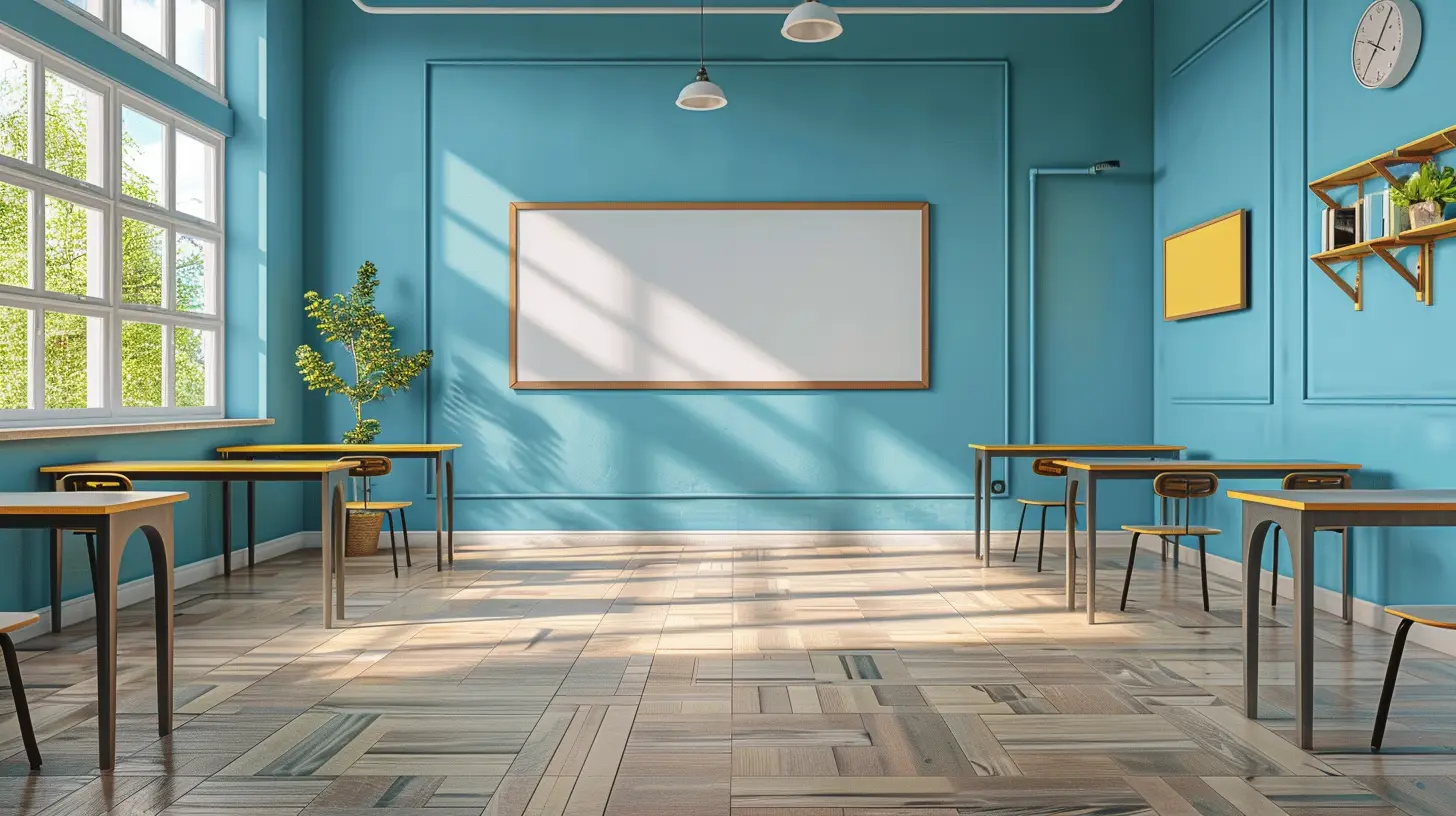How the Flipped Classroom Model Supports Differentiated Instruction
7 July 2025
Let’s be honest—traditional classroom setups just don’t cut it anymore for today’s diverse learners. You’ve got students with different learning speeds, styles, and backgrounds all squished into one space, expected to absorb the same content in the same way at the same time. That’s a recipe for disaster, or at the very least, confusion and frustration. But what if we flipped that old model on its head? Literally.
Welcome to the world of the flipped classroom. It's not just another education buzzword. Nope—it’s a philosophy, a method, and, most importantly, a powerful tool that supports differentiated instruction like a charm. If you’re an educator trying to meet each student where they are, then the flipped classroom model might just be your new best friend.
Let’s break it down and see how a flipped classroom can breathe new life into your teaching practices and truly support differentiated instruction.
What is a Flipped Classroom, Anyway?
Alright, before we dive deep, let’s get on the same page about what a flipped classroom actually is.Traditionally, students go to class to receive new information (think lectures), then go home to do assignments or homework related to that info. In a flipped classroom, this order is reversed.
Students first engage with new content at home—usually through videos, interactive slides, or readings. Then, class time is used to apply that knowledge through discussions, group work, projects, or one-on-one support from the teacher.
Simple, right? Yet, powerful.
What is Differentiated Instruction?
Now, on to differentiated instruction. This is the thoughtful practice of tailoring teaching to meet the diverse needs of all students. It’s all about giving students multiple ways to learn, express what they know, and engage with the material.Instead of a one-size-fits-all approach, differentiation might involve using various instructional strategies, providing different types of resources, or offering choices in assignments. It respects and values student diversity—whether that’s in learning styles, readiness levels, interests, or even cultural backgrounds.
So how do these two approaches—flipping the classroom and differentiating instruction—come together like peanut butter and jelly?
How the Flipped Classroom Model Supports Differentiated Instruction
Here’s where the magic happens. When you flip your classroom, you naturally create space and opportunity for differentiation. Let’s unpack how exactly that works.1. Students Learn at Their Own Pace
One of the biggest hurdles in traditional classrooms? Time.Some students grasp new concepts within minutes; others need more time and repetition. In a flipped model, students can pause, rewind, and replay instructional videos as many times as they need. Slower learners don’t fall behind, and faster learners aren’t held back.
That’s self-pacing, my friend—and it’s a differentiation dream come true.
Want to rewatch the video three times before it makes sense? Go for it.
Want to fly through the content and get to the application stage? Be my guest.
2. More Time in Class for Personalized Support
Since direct instruction happens at home, the traditional “lecture time” during class is now open for active learning. That means more time for:- One-on-one check-ins
- Small group work
- Peer collaboration
- Hands-on activities
This is your golden ticket to meet students individually where they are. Need to reteach a concept to a struggling student? You’ve got time. Want to push a high-achiever to explore the topic deeper? No problem.
You’re not spending 40 minutes lecturing—you’re coaching, guiding, and supporting.
3. Multiple Modes of Content Delivery
Differentiated instruction flourishes when learning materials come in various formats. The flipped classroom thrives on this flexibility.Videos, podcasts, slideshows, interactive simulations—you name it. You’re not stuck with just the textbook anymore.
Different learners, different modalities. Visual learners can watch videos. Auditory learners benefit from podcasts. Kinesthetic learners can engage with virtual manipulatives. Talk about options.
4. Student Empowerment and Ownership
When students are responsible for learning the content outside of class, they begin to take charge of their own learning. There’s a newfound sense of control and autonomy.And guess what? That ownership is key to differentiation.
Why? Because it encourages students to figure out what works best for them. They learn how they learn—and that’s priceless.
It’s kind of like giving them the keys to their own learning engine. They might take different roads to the destination, but hey, they get there driving their own car.
5. Makes Classroom Time More Engaging
Let’s face it—no one likes sitting through a 45-minute lecture, especially teenagers and young learners with short attention spans.Flipped classroom time is all about doing, not just listening. Students are engaged in discussions, projects, debates, critical thinking tasks, and more. It’s active learning at its finest—perfect for tapping into different interests and strengths.
This makes room for choice, voice, and flexibility in how students demonstrate understanding.
Real-Life Examples of Differentiation with a Flipped Classroom
Still wondering what this looks like in action? Let’s go through a few real-world classroom scenarios.Example 1: Middle School Math
In a middle school math class, students watch a 10-minute video on solving equations for homework. In class the next day, they’re split into three groups based on their understanding:- Group 1: Still confused? They do a teacher-led mini-lesson with hands-on practice.
- Group 2: Got it? They tackle real-world problem-solving activities.
- Group 3: Mastered it? They create their own math problem for peers to solve.
Same content, but three different paths—boom, differentiated!
Example 2: High School Literature
For a 10th-grade English class, students explore a Shakespearean sonnet at home through a podcast and PDF guide. In class:- Some students join a teacher-facilitated discussion group.
- Others work on a creative visual interpretation using Canva.
- Some prefer to write a reflection or analysis.
- And a few work collaboratively on a mini-performance.
Same goal—understand the sonnet—but different expressions of understanding.
Addressing the Challenges of the Flipped Model
Okay, okay—it’s not all sunshine and rainbows. Let’s deal with the elephant in the room. The flipped classroom isn’t a one-size-fits-all miracle. It comes with its own challenges:1. Not All Students Have Tech Access
Yep, some students may not have reliable internet or devices at home. But there are workarounds: preloading content on USBs, using school devices, or providing time during school to access materials (study halls, library time).2. Making Quality Content Takes Time
Creating your own videos and materials can be time-consuming at first. But the good news? You only need to make them once. Plus, there are tons of free, high-quality resources out there (Khan Academy, Edpuzzle, YouTube EDU—you name it).3. Ensuring Students Actually Watch the Content
This is a biggie. Some students might not do the prep at home. That’s where accountability systems come in—quizzes, reflections, digital check-ins, or even flipped-class contracts. Be creative and consistent.Tips for Teachers Starting a Flipped & Differentiated Classroom
Ready to dip your toes in? Here are a few pointers to get started smoothly:- Start small: Flip one lesson a week to test the waters.
- Keep videos short & sweet: Aim for under 10 minutes.
- Use platforms wisely: Google Classroom, Edmodo, or Seesaw make it easy to organize content.
- Create flexible groupings: Change student groups based on readiness, interest, or learning style.
- Ask for student feedback: What’s working? What’s not? Students will often tell you what they need—if you’re open to listening.
The Future of Education is Flexible
We’re not in the industrial age anymore. Our classrooms shouldn’t be assembly lines. With diverse learners come diverse needs—and that demands flexible, informed teaching.The flipped classroom model opens doors for educators to truly serve every student. When paired with differentiated instruction, it becomes a powerhouse of engagement, equity, and personalized learning.
So if you’re looking to revamp your teaching, connect with your students better, and make your classroom more dynamic… maybe it’s time to give flipping and differentiating a try.
Because honestly? Every student deserves a chance to learn in the way that suits them best.
all images in this post were generated using AI tools
Category:
Flipped ClassroomAuthor:

Eva Barker
Discussion
rate this article
1 comments
Kairo Kelly
What a fantastic read! The flipped classroom model truly empowers educators to tailor learning experiences to individual student needs. It's inspiring to see how this approach fosters engagement and helps every learner shine. Cheers to innovative teaching methods that make a difference!
July 17, 2025 at 2:58 AM


